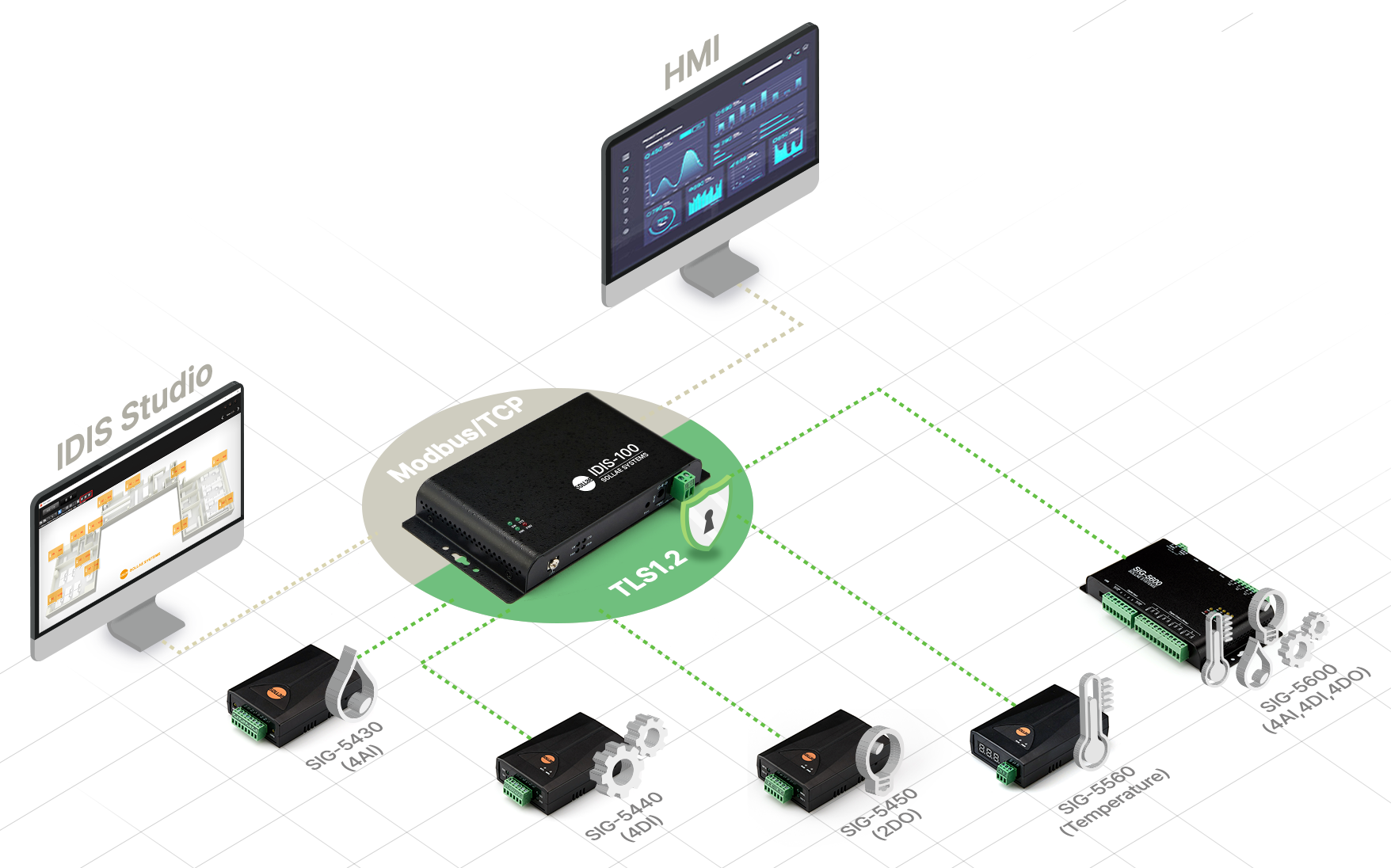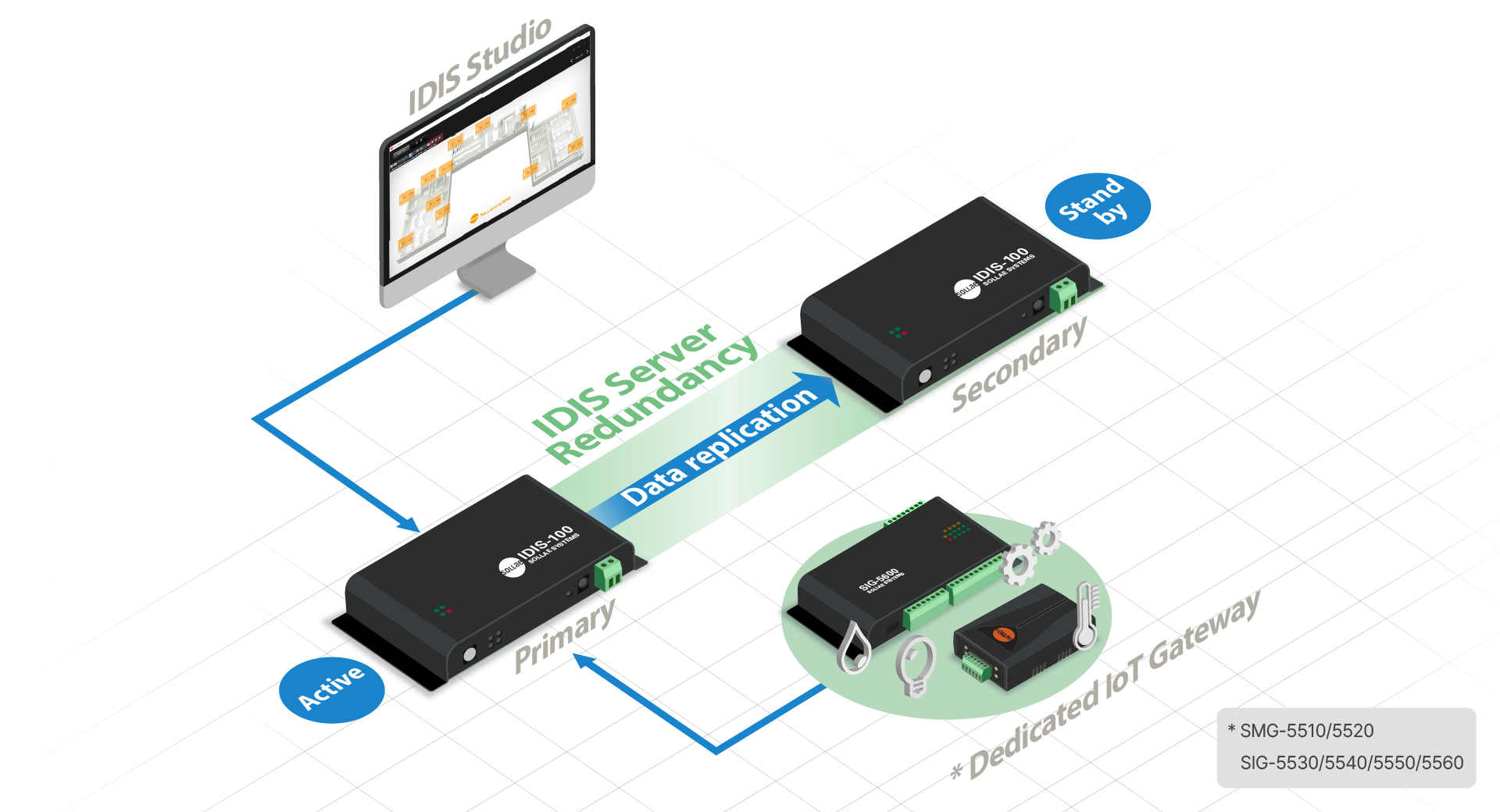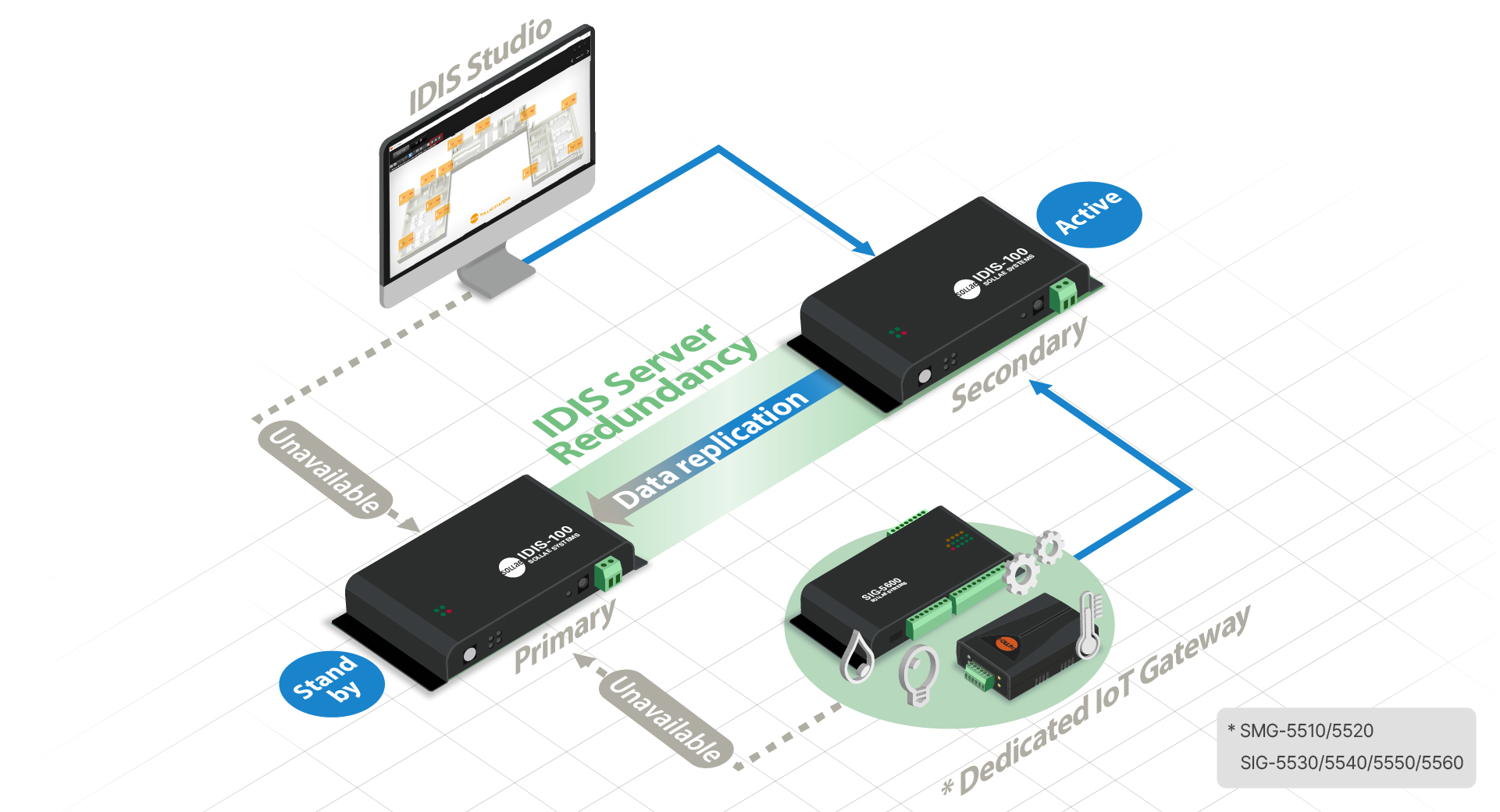
We offer Dedicated IoT Gateway as a part of our IDIS Data Integration Solution. This gateway is designed to support advanced security features for data communication, making it a more secure and reliable solution for collecting and integrating data from various sensors and equipment. Unlike generic IoT gateways, the Dedicated IoT Gateway is specifically developed for the IDIS solution, ensuring optimal performance.

Let's consider an Internet of Things (IoT) system with redundancy. The system consists of IoT Gateways, IoT IDIS servers (one primary and one secondary), and IDIS Studio software (HMI tool for IDIS).

- Initially, the primary server is active, and the secondary server is on standby.
- The IoT Gateways connect to the active IDIS server.
- IDIS Studio, a PC software (HMI), also connects to the active IDIS server.

- Active and Standby Modes: The primary server starts in active mode, and the secondary server remains in standby mode by default.
- Automatic Switching: If the active server detects a communication problem with the IoT Gateways, it switches to standby mode, and the standby server becomes active.
- Ensuring Active-Standby: A designated mechanism ensures that only one IDIS server is active at any given time.
- Server Connections: When the IDIS server is in standby mode, it does not accept connection requests from IoT Gateways or IDIS Studio. Instead, it only connects to the active server. The IDIS server accepts connection requests from IoT Gateways and IDIS Studio when it is active.
- Data Replication: When the IDIS server is active, it handles connections and sends data replication to the standby server to keep it up to date.
- Connection Attempts: An IoT gateway first attempts to connect to the primary server. If it fails after several retry attempts, the gateway assumes that the primary server is in standby mode. In this case, it switches to trying to connect to the secondary server, which is assumed to be active.
By following this setup, the IoT system ensures redundancy and failover capability, allowing stable and seamless operation even if one server encounters communication issues.